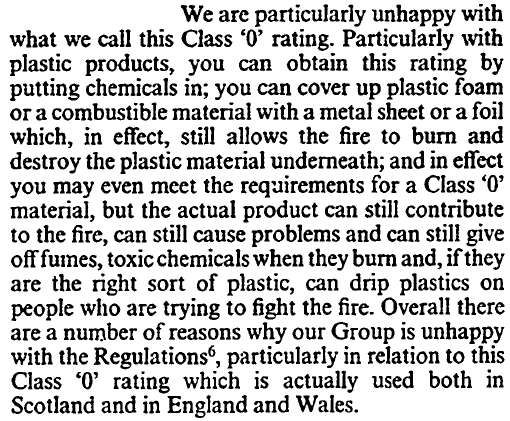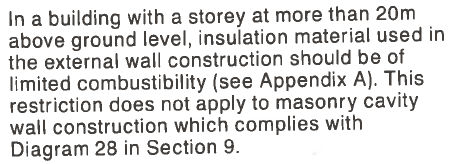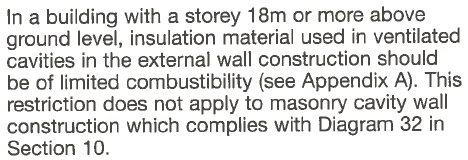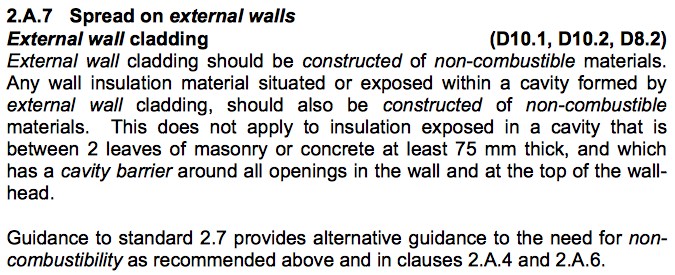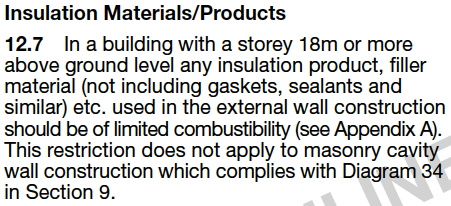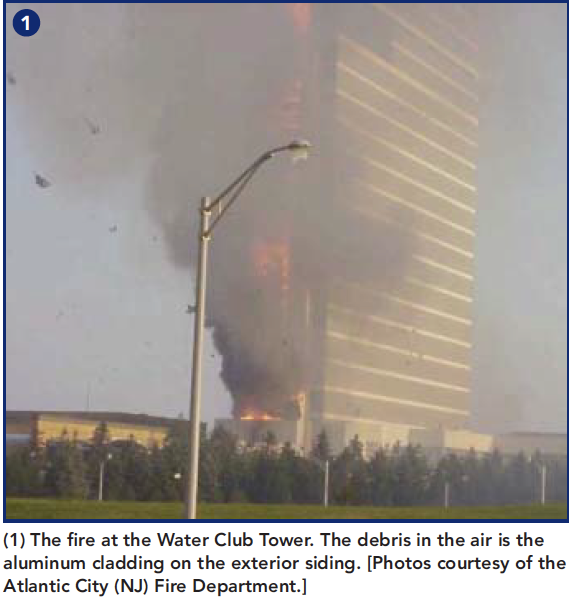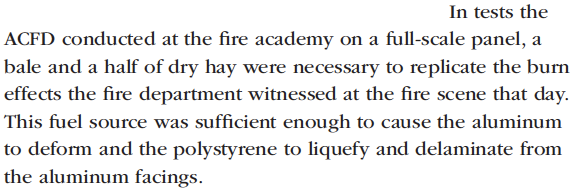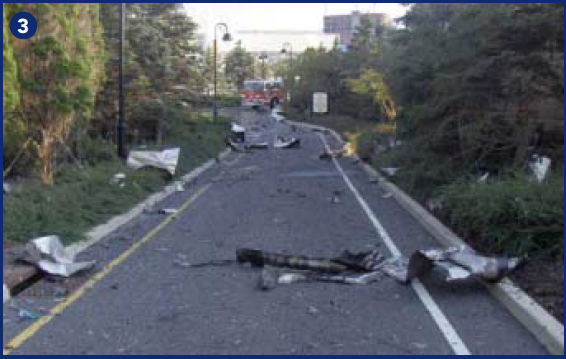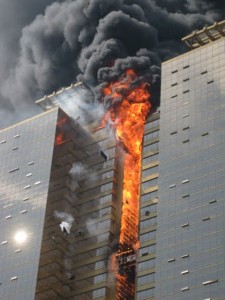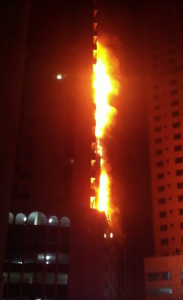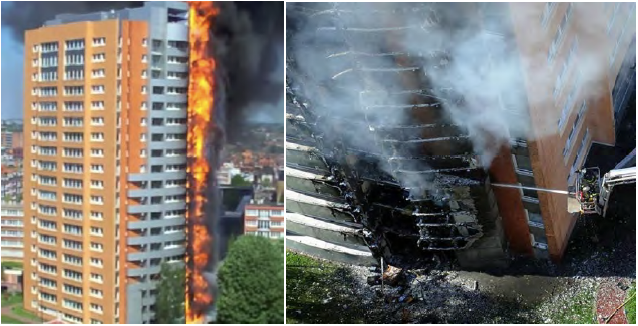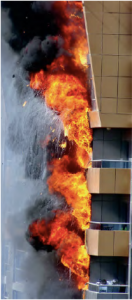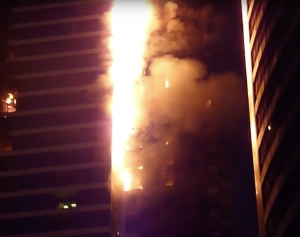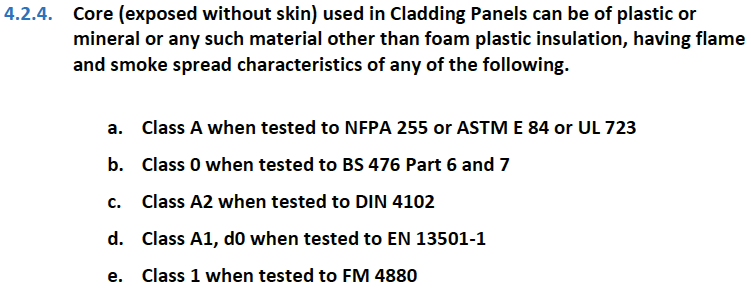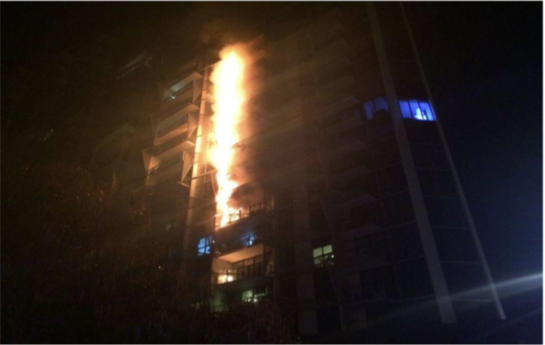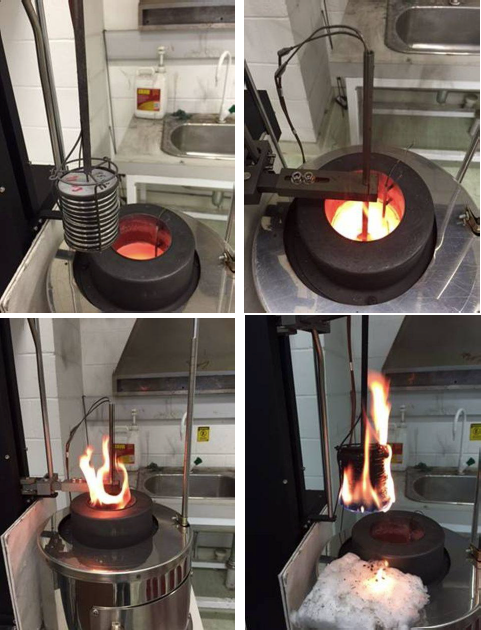In my first post on the Grenfell Tower disaster I recalled my father’s distress while serving as an expert witness in the court case that followed the 1994 Ramsgate Walkway collapse, in which six people died and others were seriously injured. He told me that the parties involved were in general interested neither in truth nor in preventing future failures and loss of life, but only in the avoidance of liability for themselves.
In this post I explain why I believe that the Government bears the main responsibility for the fire. That responsibility is shared between successive administrations from around the year 2000 onwards. If the pattern of behaviour that my father observed is a general one, then we might expect the present Government to try to deny culpability, and the Opposition to avoid drawing attention to the failures of past Labour Governments. In following posts, I will demonstrate that the Government is indeed currently engaged in just such an attempt to evade its responsibility for what is a national tragedy. In brief, it is rewriting history by claiming that the cladding panels were installed illegally on Grenfell Tower, when in reality they were permitted under the official guidance.
In my first series of posts, ‘Was the cladding legal or not?’, I demonstrated that the polyethylene cored aluminium composite cladding panels were in compliance with the building regulations, while the PIR (polyisocyanurate) insulation boards were not. In a subsequent post, I showed that it was the compliant PE ACM panels which made the greater contribution to the inferno.
Successive governments, since the 1999 ETRA Committee hearings if not before, have received clear warnings about the great danger presented by composite panels with non-combustible facings but combustible cores. Extraordinarily, the fire tests that the regulations required these panels to undergo, provided proof of their surface properties only. The flame and radiant heat was directed at the aluminium surface and so did not impinge fully on the combustible core. In a real fire, in contrast to these tests, the fire may reach the core through the panel edges, or through the panels splitting open, or through the core melting, dripping out and catching fire, or through the aluminium melting.
Dr Bob Moore of the Fire Safety Development Group warned the ETRA Committee on 20 July 1999 of the dangers of the Class 0 surface rating, which was the only fire rating required for cladding panels on high rise buildings (Evidence, Q. 13):
In the Conclusions to their Report, the Committee expressed their belief (p. x) that cladding systems should EITHER:
be entirely non-combustible
OR
be subjected to large-scale testing:
At the time there was no route to compliance through a large-scale test. The only route was through small-scale testing. The guidance applicable at that time was that of the 1991 Approved Document B on Fire Safety with 1992 Amendments. It specified that external surfaces over the height of 20 metres should be Class 0. In addition, insulation material should be of ‘limited combustibility’, as defined in the document, with an exception for insulation used in cavity walls which fulfilled certain conditions:
A material, to achieve the ‘limited combustibility’ class, had either to be inorganic and therefore non-combustible in an ordinary fire, or pass the rigours of a 750° C furnace test (BS 476 part 11 or part 4). No plastic insulation can pass such a test. The use of combustible insulation for external wall cladding over 20 m was thus effectively banned at the time of the Committee hearings in 1999.
The Government heeded one part of the advice of the ETRA Committee and introduced in 2000 a new route to compliance in Approved Document B through a large-scale system test (paragraph 13.5, Note):
[FOLLOWING PASSAGE CORRECTED, 12 FEBRUARY 2018 1
The Government thus opened the door for high rise cladding systems to be used whose outer surface failed to meet the Diagram 40 requirements. Outer cladding materials which had not achieved Class 0 could be used above 18 metres as part of a system which had been tested successfully under the Fire Note 9 test method.
As it introduced a new route to compliance through system testing, the Government did not at the same time heed the other part of the Committee’s advice and make the existing route to compliance, which involved the testing of individual components of the system, more rigorous. The Government continued to allow just those composite panels with combustible cores that had been so strongly warned against in evidence to the Committee, and which proved to be lethal in the Grenfell fire.
What is more, as their ‘response’ to the 1999 tragedy at Garnock Court, Irvine, where a man in a wheelchair died, the Government in 2000 reduced the scope of the limited combustibility requirement for insulation, so that it applied to insulation in ventilated cavities only:
Now, for the first time since 1991 or 1992, it became possible to use in high rise buildings:
a) non-ventilated External Thermal Insulation Composite Systems (ETICS), also known as Exterior Insulation Finish Systems (EIFS), in which a layer of insulation is covered with a mesh and then rendered; and
b) non-ventilated composite panels with a core of combustible insulation material.
I drew attention in an earlier post to German concern about facade fires involving ETICS systems. 2 At the present time, according to a paper by three German fire organisations, combustible insulation is not allowed in Germany in such systems above 22 metres. It was prohibited again in England in 2007, except where the entire system has passed a large-scale test.
Composite panels with a polyurethane core were a leading cause of the disaster at Lakanal. Shockingly, the external layers of the panels were composed of ‘paper-type’ materials bound together with resin, with a surface rating of a very poor Class 3 rather than the requisite Class 0. They were therefore non-compliant with the 2002 version of Approved Document B, which was current at the time of the design of the Lakanal renovations. The insulation component was in itself compliant, so far as I can see, since the panels were presumably sealed and thus not ventilated. If the regulations had forbidden such insulation, so that there had been a double regulatory barrier against these panels being installed rather than a single one only, then possibly their double non-compliance would have come to the attention of the designer, contractor or building control officer, and the tragedy averted.
To my knowledge, the only way in which the cladding regulations were strengthened at that time was to reduce the height above which the Class 0 requirement applied from 20 metres to 18 metres. But the Class 0 requirement itself, which was hopelessly inadequate on its own, continued to be all that cladding panels had to satisfy above this height.
In summary, in 2000, the cladding regulations were actually made less stringent in three ways:
i) by allowing combustible insulation above 18 metres in sealed composite panels;
ii) by allowing combustible insulation above 18 metres in non-ventilated ETICS (rendered) systems;
iii) by creating a route for outer cladding materials with worse than Class 0 surfaces to be used above 18 metres on the basis of large-scale tests.
END OF CORRECTED SECTION.]
Scotland
Both parts of the ETRA Committee proposals had been incorporated into the Scottish building regulation guidance by 2005. The Technical Handbook (Domestic) of that year included an Annex (p. 163 of pdf) with additional guidance for high rise domestic buildings:
External wall cladding was to be constructed (p. 164 of pdf) of ‘non-combustible materials’:
External wall cladding should be constructed of non-combustible materials.
The Scottish ‘non-combustible’ category includes both Euro Class A1 and A2 products and materials, whereas in England and Wales the ‘non-combustible’ category does not include A2 products and materials. From a practical point of view, the Scottish definition of ‘non-combustible materials’ is similar to the AD B2 definition of ‘materials of limited combustibility’. 3 The Scottish definition allows A2 ACM panels, but excludes both PE and FR ACM panels, just as a limited combustibility requirement would, if it were to be introduced into AD B2.
An exception was made only for insulation material sandwiched between masonry or concrete and with cavity barriers in place. Reference was made to an alternative route to compliance:
This alternative route (2.7.1, p. 120 of pdf) was to test to BS 8414 according to the criteria contained in BRE 135:
Previously, from 2002 to 2005, the sixth amendment of the Technical Standards had been in force. Cladding on buildings above 18 m was to be composed of the inaptly named ‘low risk’ materials, making the requirements almost identical to the national Class 0/Euro Class B surface requirement in England and Wales. All insulation materials in such buildings were to be non-combustible, with the same exception as in the 2005 guidance.
Overall, the regulations had been very similar to those in England and Wales. But now, in 2005, combustible cladding was effectively banned under the Linear Route to compliance. It could only be used as part of a system which had been subjected to a large-scale test, and found to be safe according to the criteria set in BR 135.
revision of the approved Document, 2006
In 2006, a new edition of Approved Document B, now in two volumes, was issued by the DCLG, to come into force in April 2007. According to testimony given to the Lakanal inquest in 2013 by Brian Martin, the revisions were prepared by a team at the BRE which Martin had led (p. 8, lines 15-24), prior to moving to the DCLG in 2008, where he assumed responsibility for delivering changes to the same Approved Document B (p. 9, lines 15-19).
Having failed to heed the warnings about combustible cladding given in evidence to the 1999 ETRA Committee, one might reasonably have expected that the extra stimulus provided by the excellent regulatory change made in Scotland in 2005 would have prompted the DCLG to follow suit. But far from taking action over the plastic cored composite materials that they had been so clearly warned about, they made only the following very limited changes to the limited combustibility requirement:
i) The restriction of the requirement to insulation material in ventilated cavities only was removed, thus in this respect restoring the situation that had pertained between 1992 and 2000.
ii) A new category of ‘filler material’ was added, to be subject to the requirement.
iii) An undefined et cetera was added after ‘filler material’.
The paragraph, now with its own heading, took the following form, still current today:
That these changes were considered by the DCLG to be minor is evidenced by the fact that they were not listed among the ‘Main Changes’ introduced in the new edition. As I will demonstrate in detail in later posts, there is no evidence that the revisions were considered at the time to extend the limited combustibility requirement to include under it the entire cladding system. The paragraph heading demonstrates rather simply that there was no intention to do so. Tragically, combustible cladding panels remained compliant with the regulations, even without a large-scale test, so long as they had a Class 0 surface rating.
[ADDED 12 FEBRUARY 2018
At the same time, the role of large-scale testing was expanded from being an alternative to meeting the provisions of Diagram 40 only, to being an alternative to meeting the limited combustibility requirements for insulation also. In other words, it became an alternative to what now became known as the Linear Route to compliance. Through this revision in the guidance, the way was opened for combustible insulation to be used in ventilated cavities in high rise cladding systems for the first time since 1992. This was a major relaxation of the fire safety requirements, and should in my opinion have been listed among the ‘Main Changes’ introduced in the 2006 edition.
END OF ADDED SECTION.]
Atlantic City PE ACM facade fire, 2007
On 23 September 2007, an entire PE ACM panel facade went up in flames (video). It had been attached to one side of the 43-storey Water Club Tower, Borgata Casino Hotel, Atlantic City, New Jersey:
A report in Fire Engineering in May 2010 by James M Foley, the Chief Fire Marshal for the Atlantic City Fire Department, identified the panels as Alcan Alucobond® (now 3a Composites Alucobond®). 4 The core is stated to be polystyrene, but this is mistaken, 5 as is confirmed by the account in Fire Hazards of Exterior Wall Assemblies Containing Combustible Components by Delichatsios and White (p. 32):
Having obtained from the building some panels that had been left intact, Foley found that they survived standard small-scale tests. But a bale and a half of dry hay was sufficient to cause the aluminium facing to deform, and the core to liquefy and to delaminate:
Further tests showed that it took heat applied to the surface of the panel at 250-400 MW/cubic meter of to ignite it. 6 Once it burned, however,
the fire intensity [was] incredible.
In the actual fire at the Water Club Tower, flame development was ‘massive’, flames reached a reported thirty feet above the roof, and debris rained down for a quarter of a mile:
Not surprisingly, the CEO of Borgata Casino Hotel chose a different panel system for the tower when the facade was reconstructed:
According to Foley, the panels had been approved by the International Codes Council, and they were being
used all over the world:
Foley would appear to be mistaken in claiming that the panels were approved by the ICC. At that time, the ICC’s International Building Code did not allow Metal Composite Materials (including ACM) above 50 feet without the MCM System being subjected to the American large-scale cladding system test NFPA 285. As confirmed also by the Wall Street Journal, New Jersey’s building code comprised the IBC (2006 edition), with light amendments, which did not affect the cladding regulations. The requirement for large-scale testing was given at 1407.10.4:
According to the same article in the Wall Street Journal, New Jersey was using the IBC at the time, and state and city officials were unable to explain the use of ACM panels on the Water Club Tower above the prescribed height limit:
But Foley was correct in saying that PE ACM panels continued to be used in high rise buildings all over the world. They continued to be used in England and Wales, despite the obvious peril into which they placed their residents, because the Westminster Government neglected to regulate against them.
pe ACM fires, 2010-1012, in south korea, the united arab emirates, and france
In case the Atlantic City fire failed to come to the attention of regulators in the DCLG, they can hardly have missed all of the following five further PE ACM facade fires that occurred between 2010 and 2012: 7
Wooshin Golden Suites, South Korea (1 October 2010, report with video)
Al Tayer Tower, Sharjah, UAE (28 April 2012, video)
Mermoz Tower, France (14 May 2012, video)
Saif Belhaza Building, Dubai (6 October 2012, report, p. 29)
Tamweel Tower, Dubai (18 November 2012, video)
No fire safety regulator could have been unaware of these fires. Why did they not prompt an urgent review of the English and Welsh regulations?
The uae responds
A further fire at Al Baker Tower in Sharjah, UAE, on 18 January 2012, while not listed by Delichastios and White as an ACM fire, certainly involved the facade (video). According to Martin Edwards, RIBA, MIFireE, in his ‘Fire Risks From External Cladding Panels – A Perspective From The UK‘ (2016), it was this Al Baker Tower fire along with the Al Tayer Tower fire, that prompted a revision of the UAE’s Civil Defence Fire Code. An Appendix (Annexure A.1.21) entitled ‘Fire Stopping, Exterior Wall Cladding, and Roofing Systems’ was added to the code. Revision 2 of the Appendix came into effect between September 2012 and April 2013.
The new cladding regulations were by no means perfect. Under Section 4.2.5, compliance for cladding panels on high rise buildings could be achieved through a number of alternative standards, which were far from equivalent. On the one hand, cladding panels could achieve compliance through achieving EN 13501-1 Euro Class A1, which requires passing the EN ISO 1182 750° C furnace test. Even aluminium melts at this temperature, let alone the polymer in the core, making this grade out of reach for ACM.
On the other, panel compliance under 4.2.5 was attainable through a Class A in the American test NFPA 255/ASTM E-84/UL 723, a surface spread of flame test designed for interior finishes. Alpolic PE ACM (3 mm) achieves this easily with a flame spread of 5, well below the maximum permitted of 25. In consequence, Section 4.2.5 seems to be ineffective in preventing the use of this very dangerous material.
Section 4.2.4, however, requires tests to be carried out on the core of ACM panels:
Surprisingly, options a., c., and d. require the same tests at the same grades as under 4.2.5. Clearly, it is much harder for the core, with its polymer content, to achieve these grades, than for the aluminium faced panel. A Class 0 to BS 476 parts 6 and 7, or a Class 1 to FM 4880, are probably not much easier (if at all) easier to achieve than a Class A to NFPA 255. I stand to be corrected, but personally I would be surprised if even an FR grade ACM could achieve any of these grades, let alone a PE ACM.
Further, under Section 4.2.6, the UAE probably requires a large-scale test to the British BS 8414-1 standard (with LPS 1582 criteria), or to either of two American tests NFPA 285, or FM 4880/1. 8
Altogether, as Martin Edwards put it in 2016, the UAE Code was
much more demanding
than the AD B2 guidance, which permitted
the inferior Class 0 standard
even for high rise buildings:
None of this happened in the dark. Sarah Colwell of BRE Global was in the UAE on 12 December 2012 for a conference on Safety Design in Buildings. She gave a presentation on ‘External Fire Spread on High Rise Buildings’. She must certainly have been aware of the new cladding regulations that were in the process of being introduced in the UAE. Colwell had co-authored the second edition of BR 135, Fire Performance of External Insulation for Walls of Multi-Storey Buildings, with her former colleague at BRE, Brian Martin. By 2012, Martin had moved to the DCLG, where he was in charge of the preparations of revisions of AD B2. He must surely have known about the tightening of the cladding regulations in the UAE. Why did the Government not act at that time to follow suit?
abu dhabi’s new regulations
Colwell would have heard a presentation the same day by Fatma Amer, P.E., on ‘Fire Safety in the New Abu Dhabi International Building Code’. The city of Adu Dhabi appeared to have adopted the American IBC (2009 edition) as its own municipal code. The new code regulated Aluminium Composite Panels in Chapter 14:
Amer explained that Metal Composite Material (MCM) systems on high-rise buildings had to be tested to the American large-scale cladding test NFPA 285:
as is confirmed by the Abu Dhabi code itself:
and the 2009 edition of the IBC itself, identical here to the 2006 edition cited above:
Again, this represented more stringent regulatory requirements than the Approved Document, which allowed combustible materials to be used on high-rise buildings without any large-scale tests. Approved Document B was amended in 2013. Why was nothing done to raise our standards at this time, and prevent our high rise buildings being clad with lethal PE ACM panels?
Melbourne Lacrosse and the Torch Dubai
On 25 November 2014, around 2 am, a PE ACM facade caught fire in the Lacrosse Docklands, Melbourne. The fire spread rapidly and vertically, reaching the roof within just a few minutes, and penetrated the building over many levels. Four hundred people were evacuated.
As recounted in its Post Incident Analysis (PIA) of the fire, the Melbourne Fire Brigade (MFB) subjected a sample of the ACM panels to the Australian combustibility test AS 1530.1:1994, a 750° furnace test similar to BS 476 part 4 and part 11, and to EN ISO 1182. As would be expected, the sample had to be removed quickly (after 93 seconds), long before it had completed the thirty minute test (p. 24-25):
In the Conclusion to its PIA, the MFB observed in understated terms that the external cladding material did not prevent the spread of fire to the necessary degree. Simultaneous internal fire ignition events over multiple floors were ‘unacceptable’ (p. 36):
The MFB believed (p. 31) that the sprinkler system had operated beyond its designed capacity, and that if it had not done so then there could well have been fatalities:
Should this not have served as a warning to regulators in England and Wales?
the government’s primary responsibility for the use of pe acm panels on grenfell tower
The Reynobond® PE ACM panels on Grenfell Tower were certified as both Euro Class B and national Class 0, and were thus clearly in compliance with the requirements of Section 12.6 of AD B2. Successive Governments had failed to heed the ETRA Committee’s advice to require external cladding systems to either be subject to a combustibility requirement, or be subjected to large-scale tests. During the preparation of the 2006 revision of AD B, the DCLG failed to follow the Scotland’s example and institute a regulatory framework for cladding of this sort. From 2007 onwards, successive administrations have failed to take warning from dramatic PE ACM cladding fires in the USA, France, Australia, the UAE and elsewhere. They are to blame for the Grenfell Tower fire more than any one else is.
I do not mean this in condemnation. I have done many wrong and foolish things myself. The important thing is to admit one’s culpability and ask for forgiveness. Covering up one’s misdemeanour is not good for ourselves, and makes it harder for those who have been wronged to forgive and move on. Let the truth come out, the guilty prosecuted under the law, the injured and bereaved forgive, and combustible cladding be banned or severely restricted.
Andrew Chapman
Notes:
- I had mistakenly assumed that the large-scale testing route was introduced as an alternative to what we now call the Linear Route as a whole, rather than to the provisions of Diagram 40 only. I had thought that combustible insulation could now be used in ventilated cavities above 18 metres through large-scale testing. In fact, this provision was not introduced until 2007 in the 2006 edition of the AD B. ↩
- I have not been able to ascertain so far whether these occurred in ventilated or in non-ventilated ETICS systems. ↩
- The Scottish non-combustible category is more restrictive in certain respects. For example, it does not include those materials with a non-combustible core and combustible facing that are counted as a material of limited combustibility in AD B2 at Table A7, National class, c. ↩
- Web version is here. ↩
- James Foley has kindly confirmed that the core was polyethylene. ↩
- I am somewhat puzzled by the dimensions, since I might have expected heat flow per square meter. But 400 MW/square meter seems too high. If the panel is 4 mm thick, then 250 MW/cubic meter would I think be equivalent to 1 MW/square meter, which seems plausible. So it may well be correct as reported. ↩
- For accounts see White & Delichatsios, ‘Fire Hazards of Exterior Wall Assemblies Containing Combustible Components‘ (June 2014), Section 5.2. Link. ↩
- The wording leaves an ambiguity, but Martin Edwards understands the large-scale tests to be required even where the panel requirements are satisfied, and Delichatsios & White (p. 116) cite WarringtonFire to the same effect. ↩
